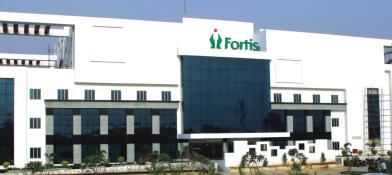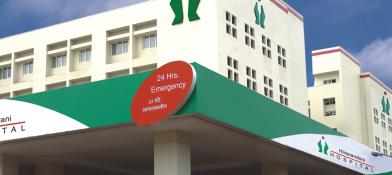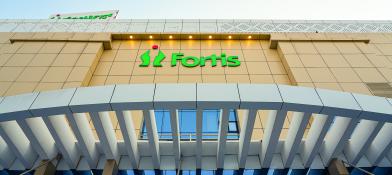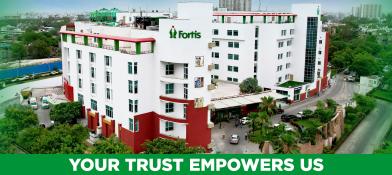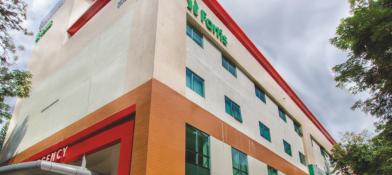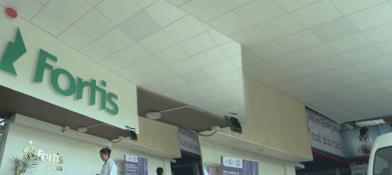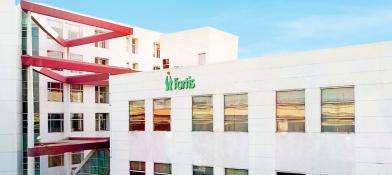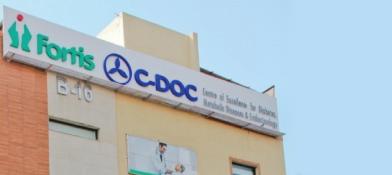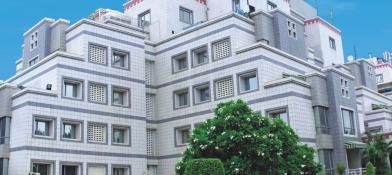Rhinoplasty
Overview:
Also known as nose job surgery - rhinoplasty refers to a surgery to change the size and shape of the nose for cosmetic purposes and to improve functional outcomes like breathing. Rhinoplasty can be done to change the skin, bone, or cartilage. It is one of the most commonly done cosmetic surgeries to improve the appearance or correct the medical condition of the nose.
Indications:
Rhinoplasty can be done for cosmetic/functional purposes. It is indicated:
- To correct a congenital disability of the nose
- To improve the overall facial appearance
- To correct the deviated nasal septum by opening the blocked nasal passages
- To treat in case of fractures
- To restore function in conditions after cancer therapies, burns, and diseases
Not all candidates are eligible for rhinoplasty. Rhinoplasty can be done on those who have finished their growth and are in good physical condition. It is not for smokers. It can be done on those who can understand the limitations of the surgical procedures and have reasonable expectations. It is indicated for those who want to correct the nose for their own benefit.
Advantages:
Rhinoplasty has many advantages:
- It can modify the bulbous, droopy nose
- Deviated nasal septum can be corrected
- It can correct the structural abnormalities of the nostrils that are big, small, or turned upward
- It can fix the bridge of the nose to eliminate any depressions or elevations
- It can change the size of the nose as per facial proportions
- It can improve the proportions of the face
- It can also correct the blocked nasal passages
Types of Rhinoplasty:
Based on the type of surgery, rhinoplasty is done in two ways. They are open and closed procedures.
- Open rhinoplasty—This surgery is used when major reshaping is needed. Cuts are made at the base of the nose to separate the skin, bone, and cartilage. This procedure allows for direct vision of the nose.
- Closed rhinoplasty—This surgery is used when minor reshaping is needed. Cuts are made on the inner side of the nostrils to separate the skin, bone, and cartilage of the nose and reshape it.
Based on the purpose for which it is done. It is of various types:
- Cosmetic rhinoplasty – Nose surgery is done to improve the appearance of the nose and face
- Nonsurgical rhinoplasty—This procedure, also called filler rhinoplasty, uses dermal fillers to temporarily fill the depressions, correct irregularities, and change the nose's droopiness.
- Functional rhinoplasty - A type of reconstructive rhinoplasty done to correct the form and function of the nose after cancer treatment, disease, or trauma. This procedure can correct birth defects of the nose or a deviated nasal septum.
A rhinoplasty surgery done to revise or correct the initial surgery is called secondary rhinoplasty. These can fix the problems that arose in the first procedure.
Before the procedure:
Before rhinoplasty, an individual should discuss the procedure with the healthcare provider (HCP) to understand its importance and necessity. The individual should also inform the HCP of all medications taken and the history of previous diseases, infections, surgeries, and allergies. Depending on the health condition and risk vs. benefits, some medications are advised to be stopped.
These include over-the-counter medications, blood thinners, and opioid painkillers. Medicines will be prescribed before the surgery. Certain routine blood and urine investigations are carried out to rule out any infections or other conditions not known to the individual. A physical examination is used to assess the condition of the nose, facial proportions, changes to be made, and final results that can be expected.
Photographs of the nose will be captured from different angles, and sometimes, software simulation is used to show the results. Nose job surgery is done on an empty stomach. Hence, it is advisable to stop eating or drinking 8 hours before the procedure.
During the procedure:
Rhinoplasty is done under general anesthesia or can be done under local anesthesia. During the procedure, a cut is made on the inside of the nostrils if it is closed or at the base of the nose if it is open. The skin over the nasal bones as well as cartilage is raised. The underlying bone or cartilage is either reshaped or corrected by adding or removing bone or cartilage and then covered again with the skin and cartilage.
Stitches are placed on the nose. The cartilage that needs to be added can be taken from the deeper parts of the nose or ear. For huge changes to the nose, cartilage, and bone can be taken from ribs, or implants can be used. The bent septum between the nose can be straightened to correct the deviated septum.
After the procedure:
Splinting is done to maintain the nose's new shape and reduce the swelling. The nostrils are packed with cotton, which is generally removed in 1-2 days. The inner bandages are kept in place for a week. Medications for pain and to ward off infections are given. Mild bleeding and mucous discharge can occur from the nose. Instructions to change the cotton will be given, and one should not be involved in intense physical exercises after the surgery.
Recovery after the procedure:
There will be swelling, color change, and bruising for 4-6 weeks after surgery, which will slowly subside three months after surgery. There might be very minimal swelling for a year that eventually fades away.
Side effects:
Some common side effects are pain, bleeding, bloody mucous discharge, swelling, and redness. They eventually subside as medications are taken.
Risks and complications:
Few risks associated with the procedure include difficulty breathing, permanent numbness, scarring, perforation of the left and right side of the nostrils, and a change in the sensation of smell.
Conclusion:
Rhinoplasty is a nose job procedure that can be done for cosmetic or functional purposes. It is a standard procedure done to enhance the appearance of the nose. It increases the individual's confidence and quality of life after functional correction.
Popular Searches :
Hospitals: Cancer Hospital in Delhi | Best Heart Hospital in Delhi | Hospital in Amritsar | Hospital in Ludhiana | Hospitals in Mohali | Hospital in Faridabad | Hospitals in Gurgaon | Best Hospital in Jaipur | Hospitals in Greater Noida | Hospitals in Noida | Best Kidney Hospital in Kolkata | Best Hospital in Kolkata | Hospitals in Rajajinagar Bangalore | Hospitals in Richmond Road Bangalore | Hospitals in Nagarbhavi Bangalore | Hospital in Kalyan West | Hospitals in Mulund | Best Hospital in India | | Cardiology Hospital in India | Best Cancer Hospital in India | Best Cardiology Hospital in India | Best Oncology Hospital In India | Best Cancer Hospital in Delhi | Best Liver Transplant Hospital in India
Doctors: Dr. Rana Patir | Dr. Rajesh Benny | Dr. Rahul Bhargava | Dr. Jayant Arora | Dr. Anoop Misra | Dr. Manu Tiwari | Dr. Praveer Agarwal | Dr. Arup Ratan Dutta | Dr. Meenakshi Ahuja | Dr. Anoop Jhurani | Dr. Shivaji Basu | Dr. Subhash Jangid | Dr. Atul Mathur | Dr. Gurinder Bedi | Dr. Monika Wadhawan | Dr. Debasis Datta | Dr. Shrinivas Narayan | Dr. Praveen Gupta | Dr. Nitin Jha | Dr. Raghu Nagaraj | Dr. Ashok Seth | Dr. Sandeep Vaishya | Dr. Atul Mishra | Dr. Z S Meharwal | Dr. Ajay Bhalla | Dr. Atul Kumar Mittal | Dr. Arvind Kumar Khurana | Dr. Narayan Hulse | Dr. Samir Parikh | Dr. Amit Javed | Dr. Narayan Banerjee | Dr. Bimlesh Dhar Pandey | Dr. Arghya Chattopadhyay | Dr. G.R. Vijay Kumar | Dr Ashok Gupta | Dr. Gourdas Choudhuri | Dr. Sushrut Singh | Dr. N.C. Krishnamani | Dr. Atampreet Singh | Dr. Vivek Jawali | Dr. Sanjeev Gulati | Dr. Amite Pankaj Aggarwal | Dr. Ajay Kaul | Dr. Sunita Varma | Dr. Manoj Kumar Goel | Dr. R Muralidharan | Dr. Sushmita Roychowdhury | Dr. T.S. MAHANT | Dr. UDIPTA RAY | Dr. Aparna Jaswal | Dr. Ravul Jindal | Dr. Savyasachi Saxena | Dr. Ajay Kumar Kriplani | Dr. Nitesh Rohatgi | Dr. Anupam Jindal
Specialties: Heart Lung Transplant | Orthopedic | Cardiology Interventional | Obstetrics & Gynaecology | Onco Radiation | Neurosurgery | Interventional Cardiology | Gastroenterologist in Jaipur | Neuro Physician | Gynecologist in Kolkata | Best Neurologist in India | Liver Transfer | Best Cardiologist in Delhi


